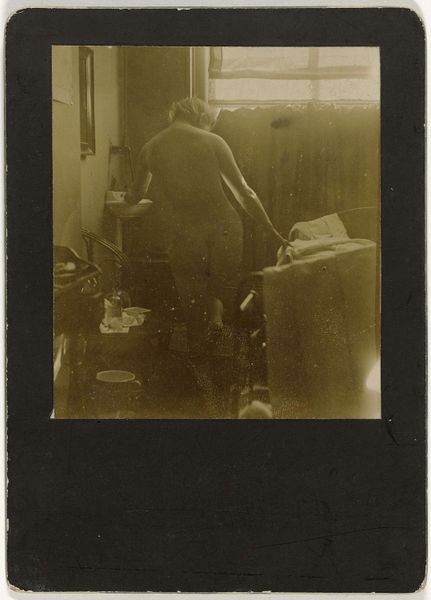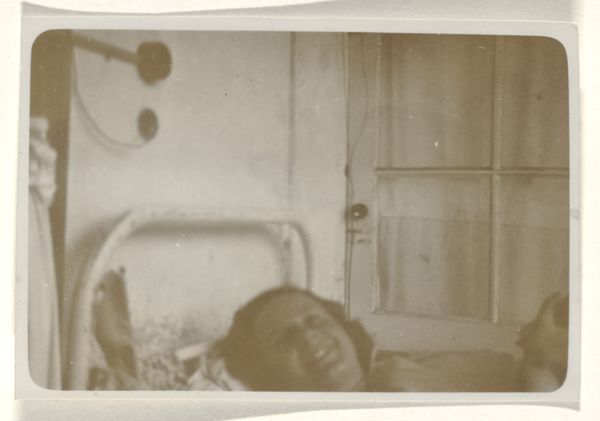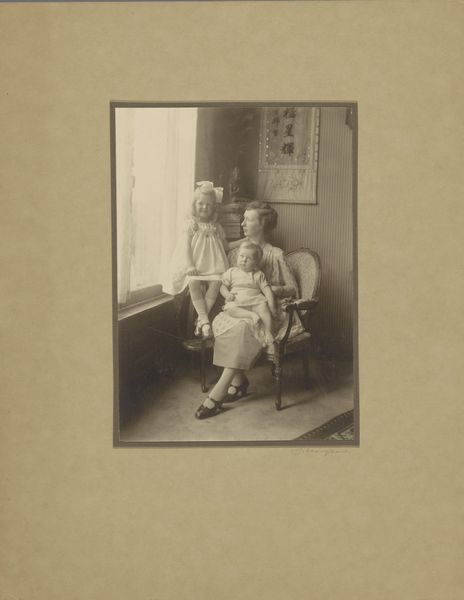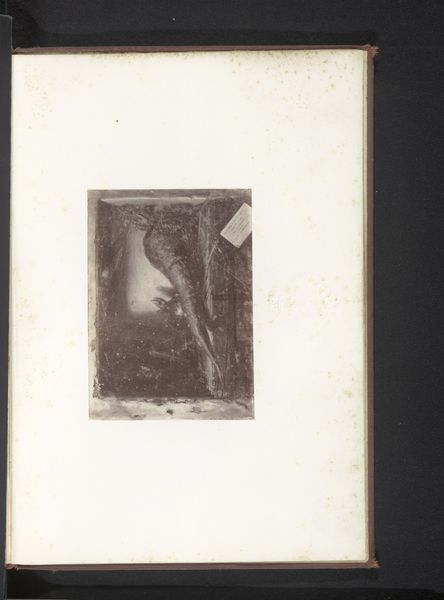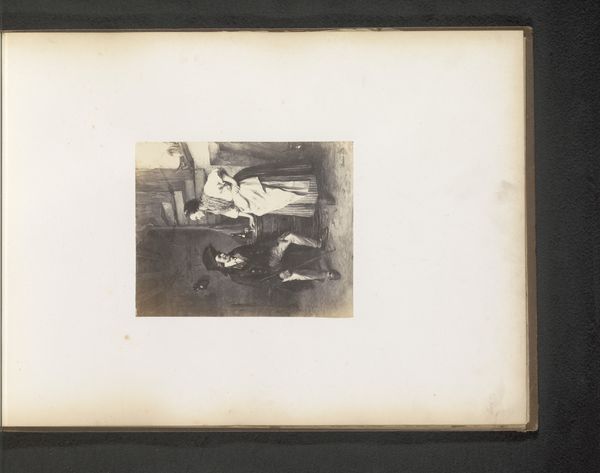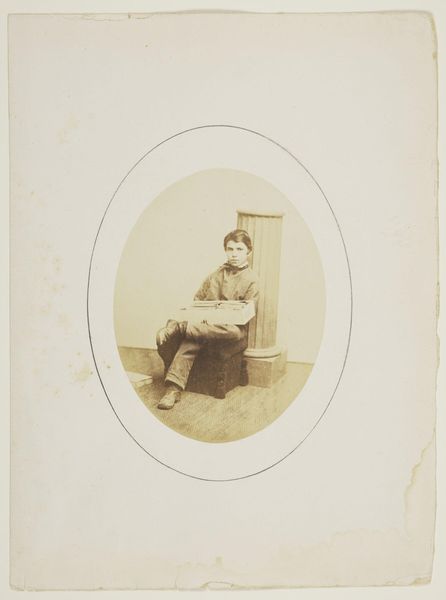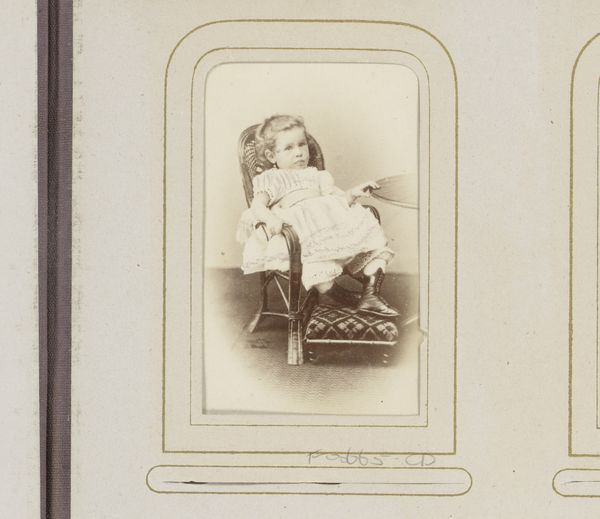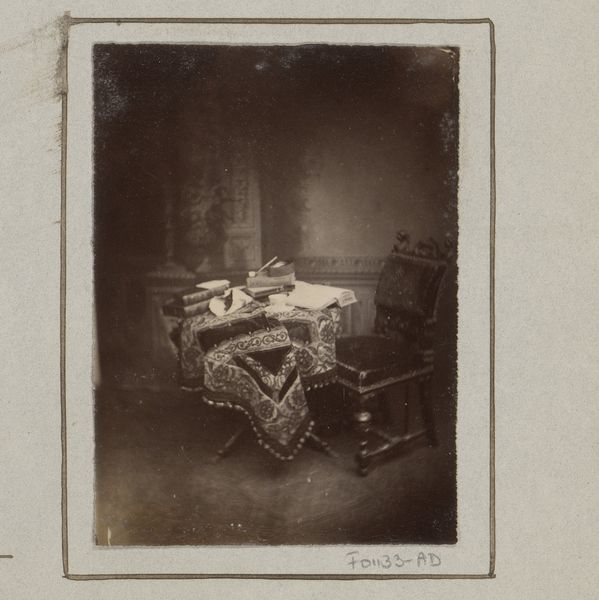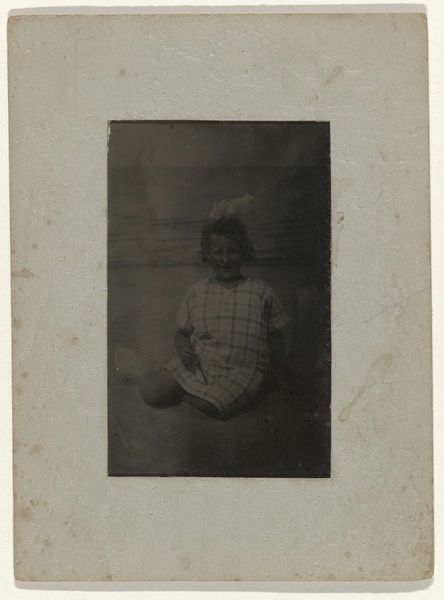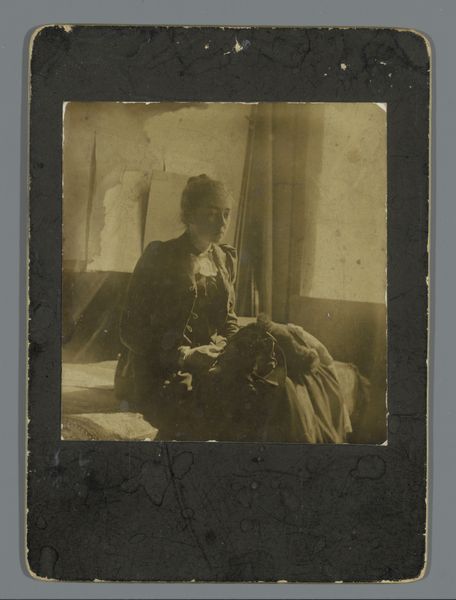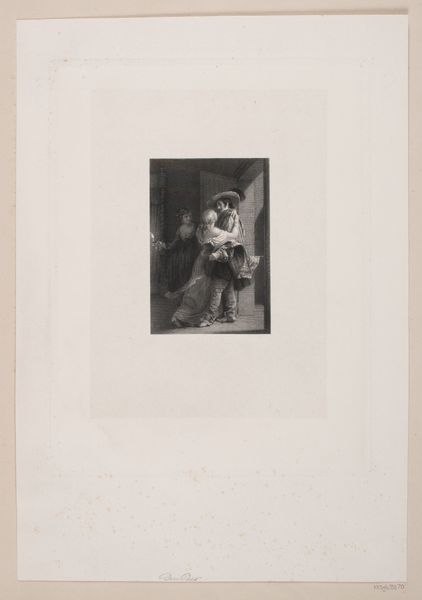
Dimensions: height 112 mm, width 83 mm
Copyright: Rijks Museum: Open Domain
Editor: This gelatin-silver print, called "Hondje Tip," was created around 1910. It depicts a dog sitting on a chair and its tonality gives it a somber mood. What do you make of this photographic work? Curator: Considering the gelatin-silver print process, we have to think about its role in democratizing image-making. It moves away from the exclusivity of earlier photographic processes. Here, the production becomes less about artistic skill and more about the chemical processes and accessibility of materials. The choice to depict a common domestic animal emphasizes a shift in what's considered worthy of artistic representation. Editor: So you're saying it challenges the traditional hierarchies of art? Curator: Precisely. Also think about the chair the dog is posed on, a ubiquitous object rendered through mass production in the 1900's. The production and the consumption of images mirrors a boom in commodity culture during the late 19th and early 20th century. I wonder, was this image was commissioned? Perhaps it was a product for mass consumption. Editor: It's fascinating to think about how the materials and methods used reflect broader social changes. What I initially thought was just a simple pet portrait gains a much richer layer of interpretation when you consider it in the context of industrial production and consumption. Curator: Absolutely. Thinking about the means of production is never separate from considering how meaning is created.
Comments
No comments
Be the first to comment and join the conversation on the ultimate creative platform.
